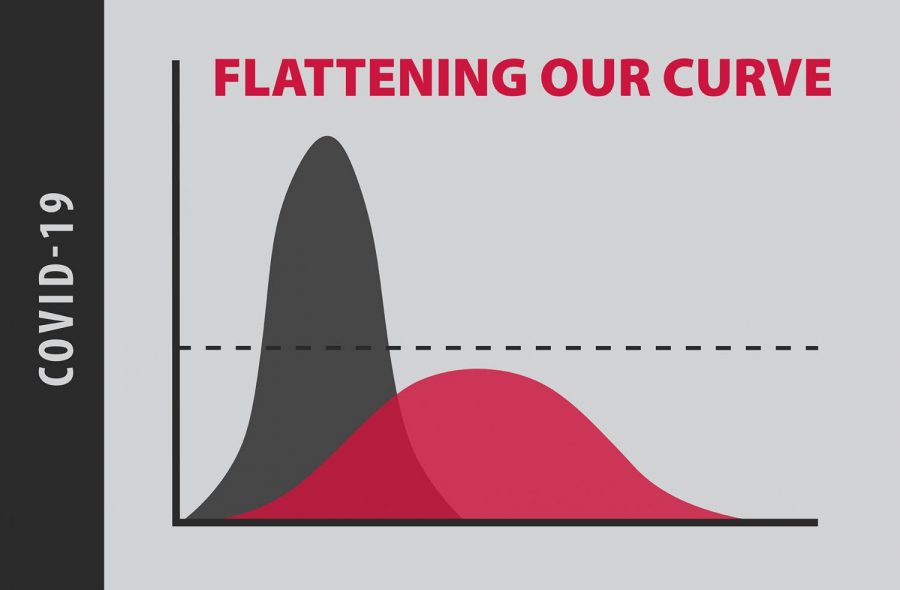Northeast research on COVID-19 indicates social distancing is critical in controlling spread
April 2, 2020
NORFOLK – New research from Northeast Community College indicates the public should continue to heed the call of authorities in practicing social distancing to prevent the further spread of the COVID-19 Coronavirus.
The Elkhorn Logan Valley Public Health Department (ELVPHD) reports as of Monday, two positive cases of COVID-19 have been confirmed in Norfolk; one has been determined to be community spread, which has led to a Directed Health Measure (DHM) by Gov. Pete Ricketts. The DHM limits members of the public as it relates to large gatherings, in close proximity to one another, and in other enclosed spaces.
In addition, ELVPHD has been made aware that a healthcare provider in Norfolk, who is not a resident of the health district, has tested positive for the virus. As of Tuesday, March 31, there are 155 confirmed cases of COVID-19 in Nebraska.
Jody Gibson, data scientist at Northeast, said her research shows that it is imperative for residents who live in the College’s 20 county service area to listen to health and government officials who have been asking citizens to do their part to mitigate the spread of the virus.
“I started collecting data and research on COVID-19 in late February. After society was affected by the virus, I became curious about the international and national trends and what it could mean for northeast Nebraska,” she said. “I saw the need in the community for analytical information that focused on the region and have reached out to the local public health departments to provide them with any analyses they may need during this crisis.”
Gibson’s research factors in data from multiple sources to show the potential impact on healthcare resources and demonstrates how critical it is for the public to heed the stay-at-home message to help slow the transmission of COVID-19.
Her most recent research, “Flattening the Northeast Nebraska Curve,” addresses how everyone can take measures to reduce spread of the virus for as long as possible.
“It is now a constant saying around the virtual water cooler these days: flattening the curve. By now most of us understand this means slowing the spread of the Coronavirus in order to protect our healthcare system and those at highest risk. But there is a lot of speculation out there about how to do this and how much will be enough,” she said.
One finding in her most recent research points out that despite school closings and a number of businesses that have reduced hours or have closed closed due to the virus, a location analysis company reports residents who reside in northeast Nebraska counties are traveling just as much as they were before the crisis hit.
Gina Uhing, executive director of ELVPHD, said at a news conference in Norfolk on Monday that her department is highly discouraging non-essential travel.
“We want to prevent exposure from other places in Nebraska and other states and then have those exposed people come back to us here in our communities and potentially expose more people here,” Uhing said.
Gibson said local public health departments are working hard on mitigation strategies.
“Isolating these individuals and others known to have been in close contact with them is relatively simple, in theory. However, as we continue to come in contact with others, the disease will continue to creep through our society.”
Gibson has spent her career dedicated to the analysis and public health efforts. She has a bachelor’s degree in mathematics and health and earned a master’s degree in Public Health, with a concentration in epidemiology and biostatistics. She has worked in the private, non-profit, education, and government sectors, both internationally and within the U.S.
She is continuing her research and plans to write a new article every three-to-four days. To read Gibson’s research, go online to the Northeast Community College website at www.northeast.edu/research. The information may also be found on the College’s COVID-19 information web page.
Gibson said she hopes her current predictions on COVID-19 are wrong and things can turnaround around before they get any worse.
“We don’t know how many cases there are out there,” she said. “The best thing we can all do right now is stay home, isolate ourselves and save the lives of those who need saving.”


















